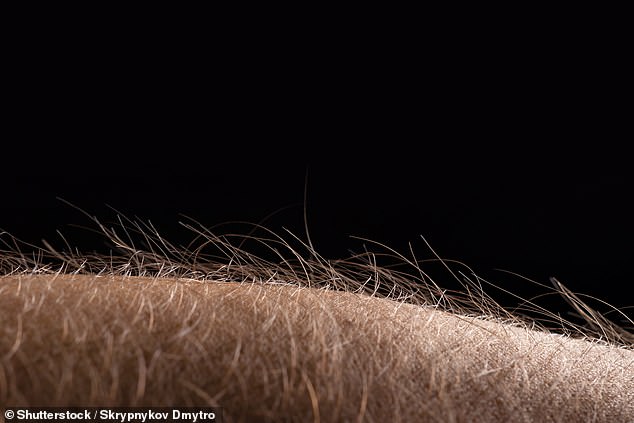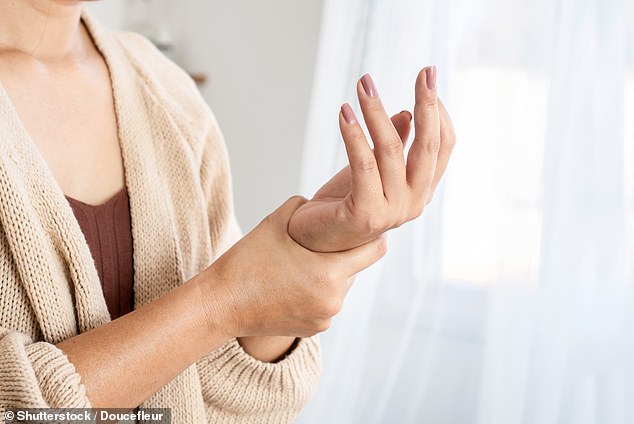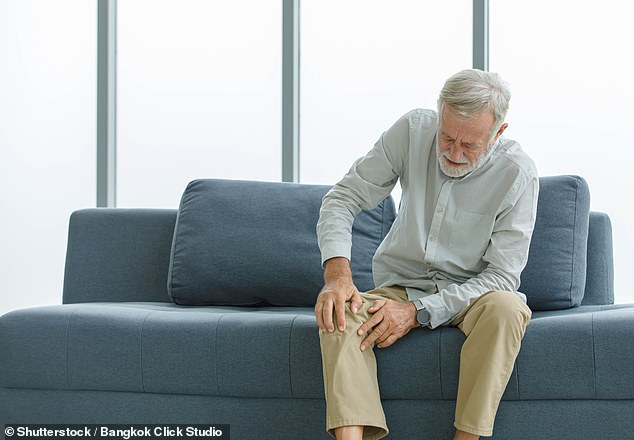An arm hair massager can be an effective way to combat pain caused by arthritis.
The device, about the size of a mobile phone, gently stimulates the nerve fibres around the hairs that respond to a light, pleasant touch, such as a caress or massage.
Known as C fibers, they are found in the skin wherever hair grows, as they share connections with hair follicles, the tube-like structures that surround the hair root.
A clinical trial is underway in Italy to see if using the device just twice a week can generate sensations that override pain signals traveling from diseased joints to the brain, reducing pain in the process.
It is estimated that up to 50 per cent of adults in the UK suffer from chronic pain. One of the main causes is osteoarthritis, where wear and tear erodes cartilage (the tough, gel-like material that cushions joints) to the point that bones rub against each other, causing pain and immobility.
A clinical trial is underway in Italy to test whether using the device twice a week can induce sensations that override pain signals. (File photo)

Known as C-fibers, they are found in the skin where hair grows, as they share connections with hair follicles. (File photo)

The wearable device reduced pain by 23 percent in a group of patients who had suffered from back pain or chronic widespread body pain for at least a decade. (File image)
While treatments such as physiotherapy and painkillers can ease the discomfort, around 100,000 people a year in the UK undergo knee replacement surgery for the condition.
The arm hair massager is designed for people with moderate to severe arthritis pain anywhere on the body. The sensations on the skin are provided by several different types of nerve fibers. While the larger nerves (the highways of the nervous system) transmit more urgent messages at speeds of up to 440 km/h, the small C fibers are more like trails, where messages travel at 3.5 km/h.
And unlike larger nerves, these C fibers lack the protective sheath made of myelin (a fatty protective material), making them easier to stimulate externally.
The trial, which is being conducted at the Catholic University of the Sacred Heart in Milan, involves 60 volunteers suffering from moderate to severe chronic pain resulting from osteoarthritis in any joint.
Half of the participants will use the stroker (which has a rotating arm that connects to the skin as it rotates) for 30 minutes twice a week for three months. The rest will use a dummy device that looks similar but does not have a rotating arm. The device is held against the skin between the elbow and wrist.
The trial follows research from the same team which found that using the wearable device reduced pain by 23 per cent in a group of patients who had suffered from back pain or chronic widespread body pain for at least a decade. This result was achieved with just 11 minutes of use.
The researchers said that while it is not clear how it works, one theory is that pleasant touch blocks some or all of the pain signals reaching the brain by activating the opioid system, which is involved in controlling the transmission of pain signals. Stroking may also increase the production of oxytocin, a hormone that improves mood.
Professor Sam Eldabe, consultant anaesthetist and chronic pain specialist at James Cook University Hospital in Middlesbrough, commented on the research: “It (the device) seems like a simple and elegant therapy for an often complex problem. It remains to be seen whether the effect is consistent.
“We also need to see whether the device delivers the same results outside of clinical trials, where the weight of patient expectations may improve outcomes.”


